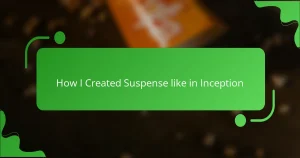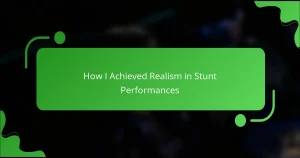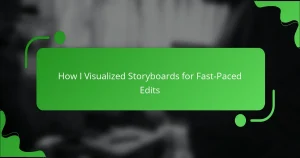Key takeaways
- Action short films evoke intense emotions and excitement through engaging storytelling and visual techniques.
- Slow motion enhances emotional impact, allowing viewers to connect deeply with pivotal moments in action sequences.
- Careful planning and timing in action sequences improve pacing and narrative engagement, making every moment purposeful.
- Utilizing advanced tools, like high-frame-rate cameras and editing software, can elevate slow motion effects and lead to stunning results.
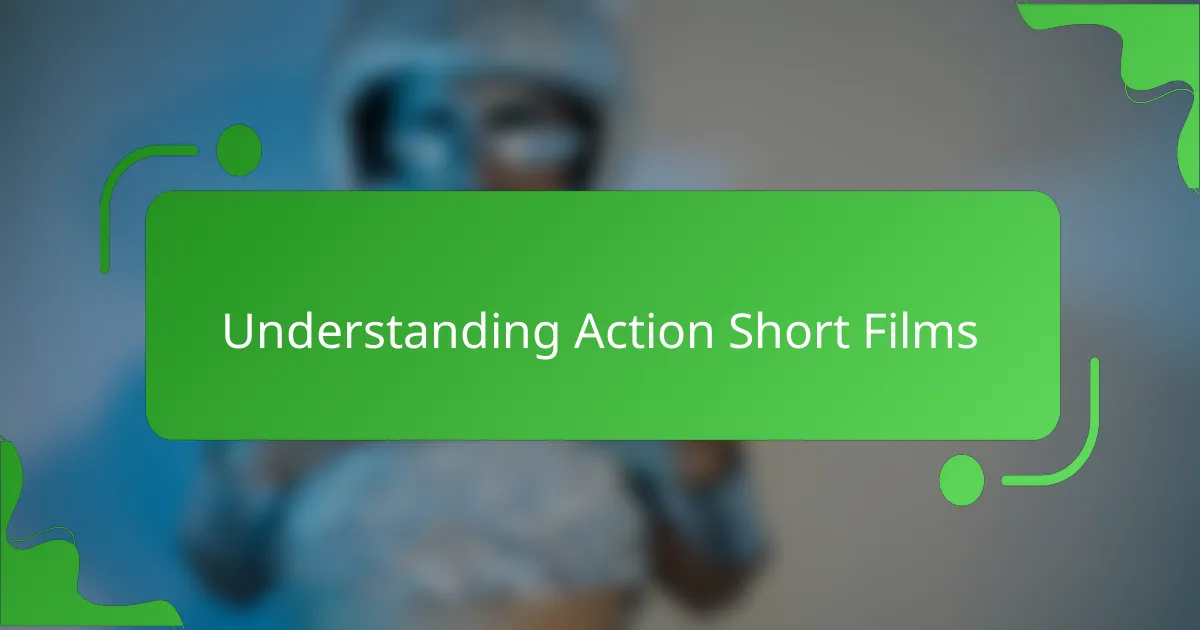
Understanding Action Short Films
Action short films are unique in how they deliver intense excitement and adrenaline in a brief format. I remember the first time I watched a well-crafted action short; I was left breathless, wanting more. These films often rely on engaging storytelling, dynamic visuals, and powerful sound design to create that thrilling impact in just a few minutes.
At the heart of every great action short film is its ability to encapsulate intense emotions and high stakes within a compressed narrative. Have you ever felt that rush of exhilaration during a seemingly impossible chase scene? That’s the magic of action shorts—they draw you in swiftly, making the viewer feel every twist and turn.
Understanding the essence of action short films involves recognizing the careful balance between choreography and storytelling. Each movement, each shot, carries weight, often reflecting deeper themes that resonate on a personal level. I’ve found that when directors skillfully integrate elements like slow motion in their sequences, it not only enhances the visuals but also allows the audience to savor the emotional beats, deepening their connection to the story.
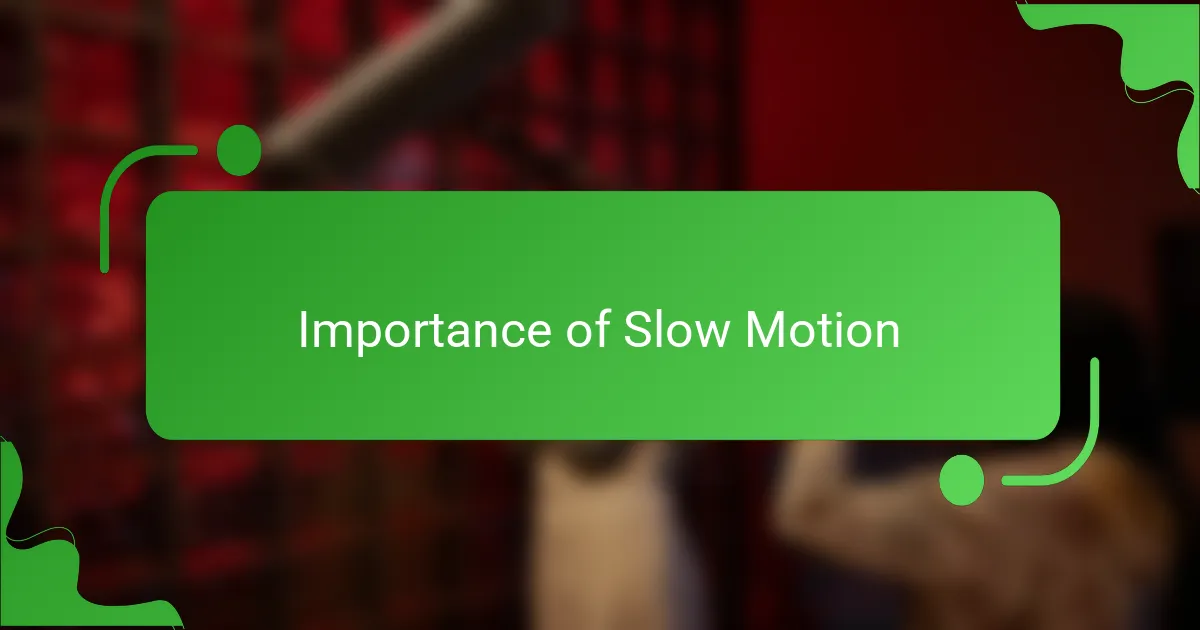
Importance of Slow Motion
When I first experimented with slow motion in my action sequences, it was truly a game changer. The ability to highlight specific moments, whether it’s the impact of a punch or a bullet whizzing by, adds a layer of intensity that draws viewers in. I remember vividly how a scene, which felt ordinary at regular speed, transformed into a breathtaking moment of raw emotion and tension when slowed down.
Slow motion also allows for better storytelling. It gives the audience time to absorb the significance of a scene, creating a deeper connection with the characters. I found that by incorporating slow motion, I could really emphasize the stakes of the action, making the audience feel like they were right there in the middle of the chaos.
Here’s a comparison table that illustrates the key aspects of using slow motion versus regular speed in action sequences:
| Aspect | Slow Motion | Regular Speed |
|---|---|---|
| Emotion | Heightened feelings, increased tension | Standard emotional engagement |
| Detail | Captures intricate details of motion | Overview of action without depth |
| Audience Engagement | Greater immersion | Traditional viewing experience |
| Storytelling | Enhances narrative impact | Basic storytelling |
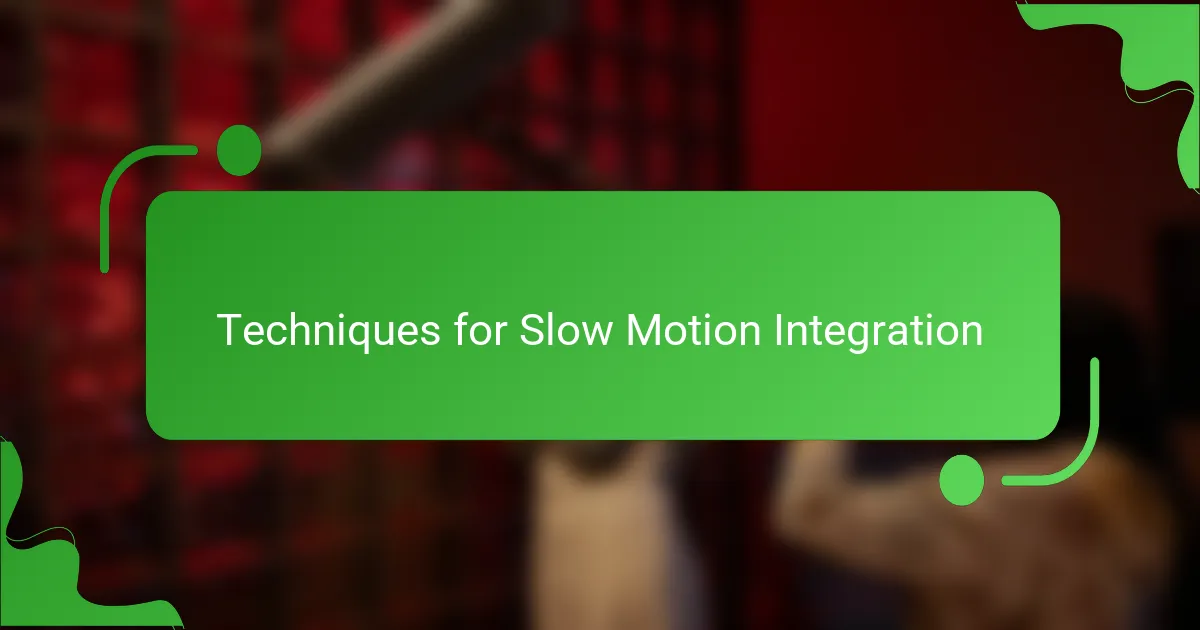
Techniques for Slow Motion Integration
When integrating slow motion into action sequences, timing is everything. I’ve found that choosing the right moment to slow down can heighten the drama. For instance, I often slow down a pivotal impact moment to amplify the viewers’ emotional response. It really pulls the audience into the action, making them feel every hit or near-miss deeply.
Another technique involves playing with camera angles. By shifting perspective during a slow motion shot, I can create a more immersive experience. For example, during a chase scene, I like to capture a close-up of the actor’s determined expression as everything else blurs around them. It’s a powerful way to convey their struggle and determination.
Here’s a simple comparison between two techniques I’ve employed:
| Technique | Impact |
|---|---|
| Timing | Enhances emotional connection, making moments feel more significant. |
| Camera Angles | Creates an immersive experience, pulling the viewer deeper into the action. |
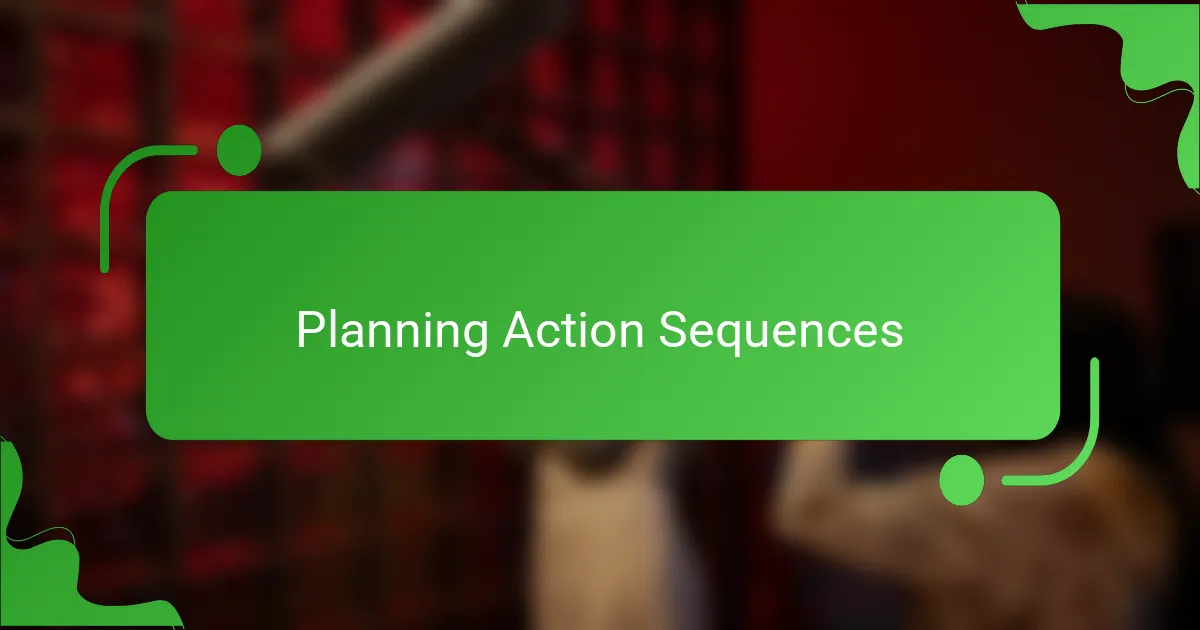
Planning Action Sequences
Planning action sequences is a crucial step that sets the foundation for the entire film. In my experience, mapping out each beat of the sequence is essential; it ensures that every moment is purposeful and contributes to the overall narrative. I remember meticulously sketching out a fight scene once, where each move was designed not just for flair but to drive the story forward—combining choreography with character motivation.
I often ponder the significance of pacing during the planning phase. You might find that certain moments require an exhilarating tempo, while others benefit from a more deliberate pace. I recall one sequence where slowing down the action at just the right moment allowed the audience to digest the stakes involved—people breathlessly on the edge of their seats as every second lingered, making those critical plot points hit harder.
In addition to timing, visual storytelling plays an important role in my planning process. Each shot must tell its own part of the story. When I planned a sequence involving a daring escape, I made sure to include varying perspectives and angles that would draw viewers into the character’s experience. Emphasizing the frantic nature of the scene visually transformed the emotional dynamic and made it more relatable. How do you envision your characters’ journeys unfolding in an action-packed moment?
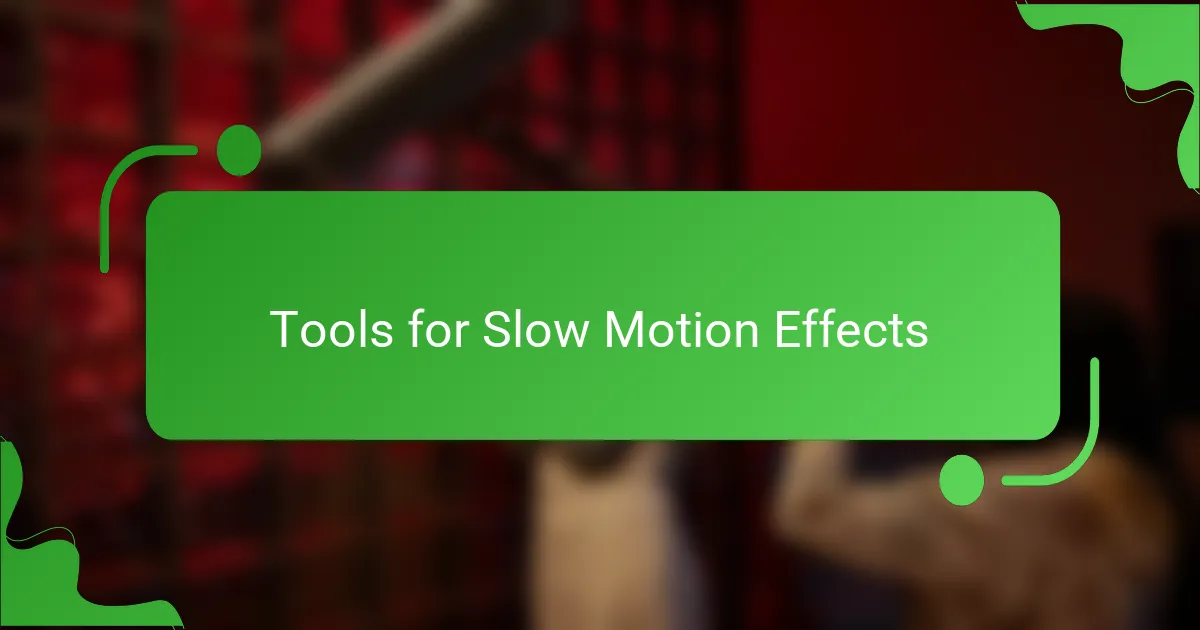
Tools for Slow Motion Effects
When it comes to tools for creating stunning slow motion effects, I’ve found that camera selection plays a significant role. High-frame-rate cameras, like the Phantom Flex series, can shoot up to 1,000 frames per second. This capability allows me to capture incredibly detailed moments that would otherwise be lost in standard footage. I still remember the first time I used one; seeing a water balloon explode in slow motion was a revelation.
Editing software is equally important in achieving the desired slow-motion effect. Programs like Adobe Premiere Pro and Final Cut Pro offer advanced features that allow for smooth slow motion creation. I often find myself adjusting speed curves to highlight specific beats in an action sequence, making sure the audience can feel every punch or kick. Have you ever noticed how certain editing tricks can elevate an already great shot into something truly unforgettable?
Finally, adding practical elements like slow-motion rigs can greatly enhance my shots. Using equipment like glidecams or gimbals provides stability, ensuring that the slow motion feels smooth rather than jerky. I recall a particularly intense chase scene where I relied on a gimbal for those sweeping, fluid motions; it made the final edit feel seamless and engaging. Considering these tools can seriously transform your action sequences and leave audiences in awe.
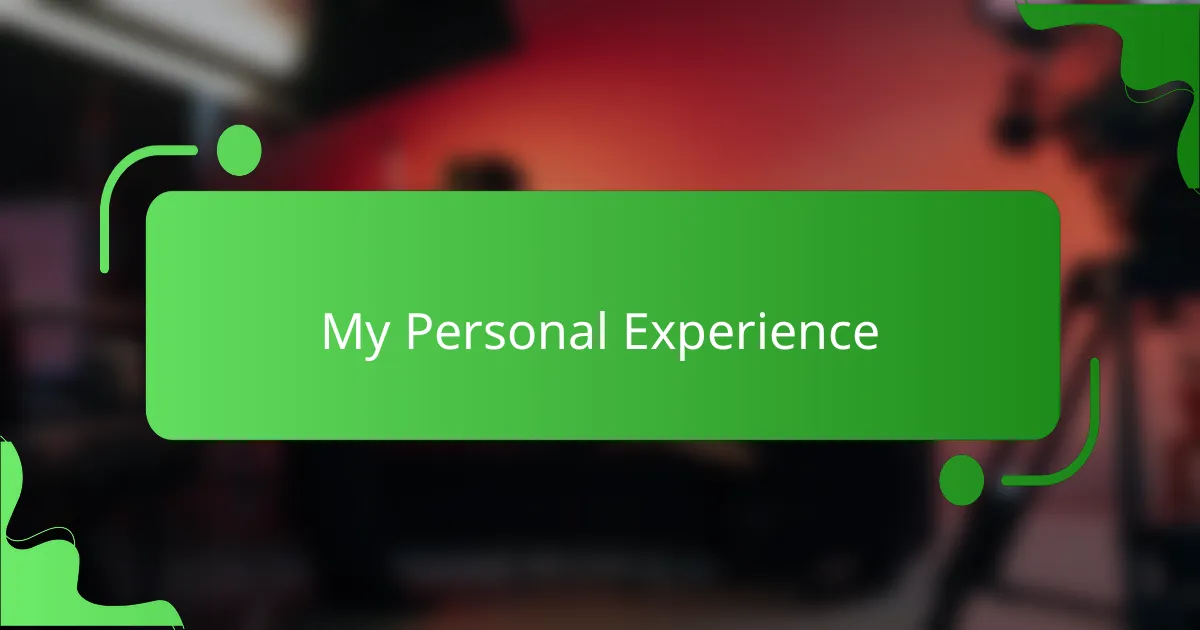
My Personal Experience
When I first started integrating slow motion into my action sequences, I was both excited and nervous. I vividly remember the first time I saw a character’s dramatic leap captured in slow motion—it felt like I had opened a new dimension of storytelling. This technique allowed me to emphasize the emotional weight of pivotal moments, making viewers feel the adrenaline rush in a way I hadn’t experienced before.
In a memorable scene from my latest short film, I used slow motion to highlight a crucial fight moment. The protagonist’s struggle was palpable as I slowed down the flurry of punches, allowing the audience to absorb each strike’s impact. The response was overwhelmingly positive; people felt the intensity and urgency that the slower pace delivered, proving just how effective this method can be in amplifying emotions.
| Action Technique | Impact of Slow Motion |
|---|---|
| Standard Speed | Standard pacing allows for quick transitions without delving into emotion. |
| Slow Motion | Heightens tension and draws attention to emotional climaxes in scenes. |
